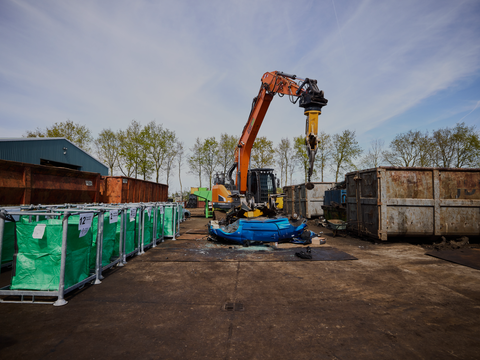Performance Polymers
Inside the car:
The unique potential of automotive recycling
Car scrap yards have long been hubs for recycling. From more conventional cars reaching end-of-life today to newer, high-tech models, mechanics have consistently been able to find spare parts, and car metals have been recycled for decades.
But what happens to plastics? According to Plastics Europe, the average car contains between 150 and 200 kilograms of plastic, which has mostly been incinerated or landfilled, until now.
BASF's new technologies are poised to change this, especially in light of upcoming regulatory requirements of the End-of-Life Vehicle Regulation (ELVR). Several pilot projects demonstrate how automotive waste can be transformed into valuable materials and returned to a closed loop within the automotive industry.
There are three major steps to complete automotive plastics recycling:
Car dismantling
Automotive recycling begins with dismantling the car. This step makes possible the separation of parts that can be repaired or refurbished to be re-used in other cars in the aftermarket. The remaining car shell is shredded, melted, and then reused in construction steel, new vehicles or appliances.
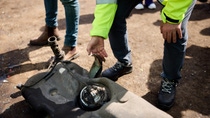
Plastics recycling
A functioning circular economy requires a set of complementary recycling solutions. There is no silver bullet to recycle all 35 plastic parts at once. Instead, a recycling cascade, from less to more energy intensive processes, must be applied.
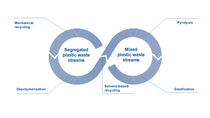
It starts with mechanical recycling which preserves the plastic molecular structure of the polymer, utilizing less energy to clean it, melt it, and reshape it for use as recycled plastic. For example, automotive bumpers, typically made from polypropylene (PP), are one of the most mechanically recycled car plastics.
BASF has recently developed an advanced mechanical recycling technology which allows polyurethane (PU) foams to be 100% recycled and used as a raw material for new foams. This is especially promising for the automotive industry where a car contains up to 25 kg of PU on average. In partnership with BASF, ZF Lifetec has developed a first prototype steering wheel using its own production waste.
Plastics that cannot be mechanically recycled are processed through various chemical recycling methods. Next up is depolymerization where the energy intensity increases in order to break down polymers into monomers.
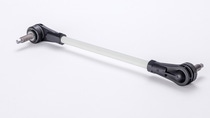
Taking the example of a polyamide 6 (PA6), the monomer caprolactam obtained by the depolymerization is then purified. This is followed by repolymerization into high-quality polyamide, which is further processed into a virgin polyamide compound according to the requirements of the application. This meets the highest quality standards and is suitable for demanding automotive components.
This process allows for the recycling of heavily contaminated plastic parts – even used oil pans from end-of-life vehicles – by completely removing potentially hazardous substances that would otherwise impair the quality of the recyclate in mechanical recycling.
A successful example is the Stabilizer Link chassis part for Mercedes-Benz, produced by project partner ZF Group. Tests carried out on prototype geometries and manufactured components show that depolymerization enables polyamide compounds that can be used without compromising on performance or other chemical and physical properties.
Another obvious candidate for recycling is the tire. Here, BASF’s technology partner Pyrum uses pyrolysis to turn end-of-life tires into pyrolysis oil, a secondary raw material which is then fed into BASF’s Verbund production at the beginning of the value chain — saving fossil resources.
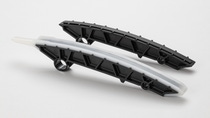
Automotive shredder residue
So far, most plastics and foams in a car are addressed through tailored recycling technologies. What is left is the automotive shredder residue (ASR): a kind of “final boss” for anyone involved in car recycling. ASR is what remains of the car after metal, glass, rubber and the like have been removed.
Further along the recycling cascade is solvent-based recycling, which consists of the separation of used polymers from a mixture through targeted dissolution. Unlike depolymerization, solvent-based recycling keeps polymer chains intact. Once purified, these polymers can be processed into usable compounds, such as PA6.
This technology was validated using a chain slide rail currently in series production at Mercedes-Benz. As part of the pilot project, the components were manufactured and successfully tested by project partner Pöppelmann under near-series conditions.
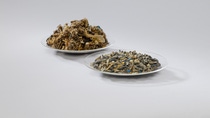
Ultimately, when sorting plastic waste from ASR is not technically or economically feasible, gasification offers a final recycling solution. In collaboration with Porsche AG and the technology partner BEST, BASF has successfully completed a pilot project showing that automotive waste can be recycled through gasification and used as raw materials to produce new automotive parts, such as steering wheels. This ultimate form of chemical recycling has great potential for converting complex, mixed waste streams into new, valuable raw materials, representing a sensible alternative to waste incineration.
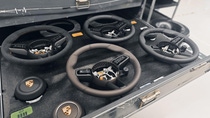
Conclusion
From dismantling to advanced chemical recycling, the journey towards full circularity in automotive plastics is already underway. Each step brings us closer to a future where cars are not only driven sustainably but also recycled sustainably. By combining complementary technologies and strong partnerships across the value chain, the industry can turn today’s complex waste into tomorrow’s valuable resources — closing the loop for plastics inside the car.
Consult with an expert
Self-service solutions:
